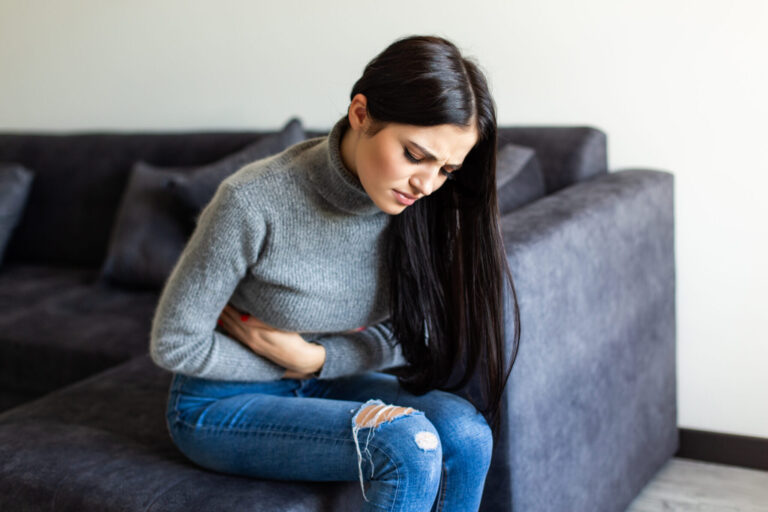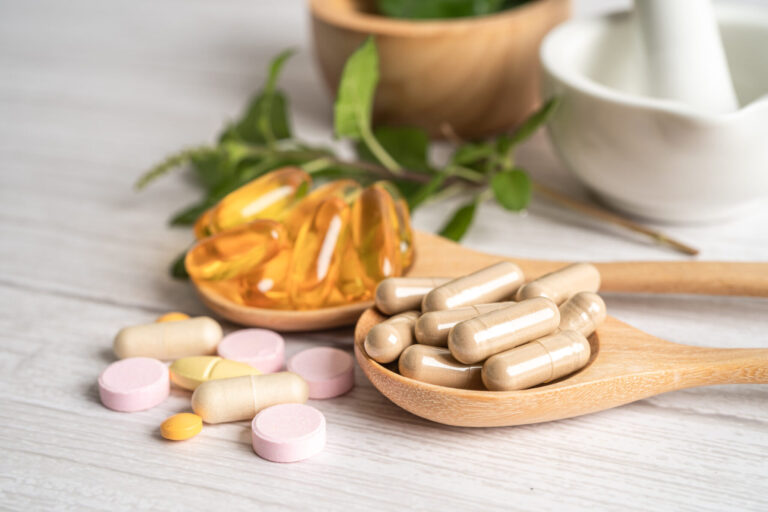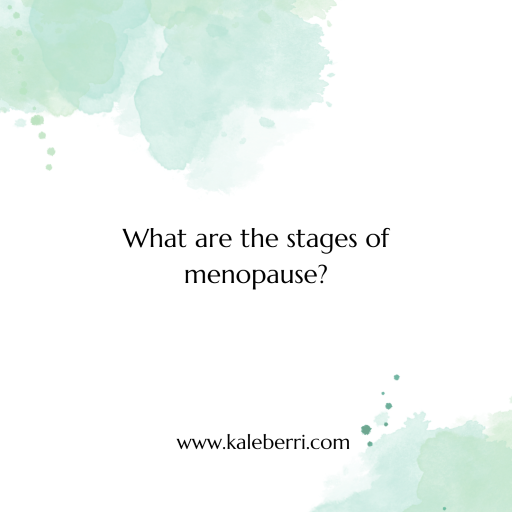Natural Conception Remedies: How To Get Pregnant Naturally
Many couples struggle to conceive. If you’re having difficulty conceiving, you may be wondering about natural conception remedies. Can they help you get pregnant?

Contents
Signs of healthy fertility in women
If you’re trying to conceive, you’re probably familiar with the basics of ovulation: Once each month, a mature egg is released from one of the ovaries and is available to be fertilized. This egg is available in a 12 -24 hour window for conception to occur.
Ovulation occurs in the middle of the menstrual cycle, approximately day 14 if you have a 28 day cycle or approximately 14 days prior to the beginning of your next period if you have a longer cycle; i.e. if your cycle is 32 days you likely ovulate on day 18.
There are a number of signs that indicate healthy fertility which include:
- women who are cycling regularly – where a cycle is < 35 days
- women who experience ovulation pain, an ovulatory bleed or ovulatory changes in cervical mucous or temperature- indicates ovulation is occurring
- women whose periods are not heavy, very painful or prolonged.
If you’re not sure whether you’re ovulating, you can track your basal body temperature for a few cycles and should see a rise in temperature the day after ovulation. Additionally you can check your cervical mucous. Cervical mucus is produced by the cervix and changes throughout your cycle. It helps sperm travel from the vagina to the egg. Cervical mucous becomes wet, stretchy and slippery at ovulation and looks and feels similar to raw egg whites.
You can also test for ovulation with an ovulation test strip which tests the level of luteinizing hormone in the urine. Luteinizing hormone rises mid cycle and signals to the ovary to release a mature egg. If you have detected a rise in luteinizing hormone it is likely that ovulation will occur in 12-36 hours.
What about male fertility?
A man’s fertility also relies on a number of semen parameters, including:
- Sperm count – this is the number of sperm in one ejaculation. A ‘normal’ sperm count is over 15 million sperm per ml.
- Sperm motility – this is the percentage of sperm that are moving. A ‘normal’ level is over 50%.
- Sperm morphology – this is the percentage of sperm that have a normal shape. A ‘normal’ level is over 4%.
These semen parameters can only be determined by lab analysis as ejaculation does not equate to healthy sperm quality.
If you are trying to get pregnant, you should have a good understanding of your body and your menstrual cycles. Tracking them on a calendar or app can help you identify when your fertile window is, which is the 2-3 days before and after estimated day of ovulation.
It is ideal to have sex every two to three days during your fertile window, as this is the time when you’re most likely to conceive. Sperm survives for 3-5 days in the vagina and fallopian tubes, but the egg only survives for 12-24 hours so having sex before ovulation is particularly advantageous.
How Common Is Infertility, and Why Is It Rising?
According to the Centers for Disease Control and Prevention, about 12 percent of couples in the United States have difficulty getting pregnant or carrying a baby to term. The rise in infertility is likely due to a number of factors, including environmental toxins – including plastics phthalates and endocrine disruptors, obesity, and lifestyle factors such as poor nutrition, alcohol and smoking and stress.
Fertility and age
Women are born with undeveloped eggs and by puberty around 300,000 eggs remain. Over her reproductive life she will likely ovulate around 300 eggs, the rest compete for maturation each month and some dwindle away in the process called atresia. Not only does the number of eggs decline with age, but also the egg quality. This is why chances of pregnancy declines with age.
The average woman reaches the end of her fertility around age 45, even though menopause occurs on average around age 51. Monthly fertility rates at different ages are:
- early to mid-20s has a 25–30% chance of getting pregnant every month.
- fertility declines from age 30.
- By age 40, the chance of getting pregnant in any monthly cycle is around 5%.
Taking a day 2 hormone test for follicle stimulating hormone (FSH) and estradiol (E2) as well as anti-Mullerian hormone (AMH) can give an indication of where your ovulation potential is at. At this time in the cycle a higher FSH is indicating good egg reserve and the follicles are sensitive to the FSH messages. Additionally E2 should be under 50 pg/ml. If AMH level is low it indicates potential lower reserve of eggs. Elevated AMH can indicate polycystic ovarian syndrome (PCOS).
Male fertility also reduces with age from approximately 40-45 years.
Common causes of infertility
In women, infertility can be caused by a variety of factors including:
- impaired ovulation
- obstruction of the reproductive organs i.e. from previous sexually transmitted disease, pelvic inflammatory disease, or endometriosis
- increased levels of prolactin, or imbalanced thyroid
- presence of polycystic ovarian syndrome (PCOS) or insulin resistance
- presence of endometriosis
- nutritional issues
- higher age
- celiac disease and other autoimmune disease
- stress: – can impair ovulation
In men, some causes of infertility are:
- imbalance of hormones in the body
- improper nutrition
- varicocele condition
- issues surrounding ejaculation
- presence of anti-sperm antibodies
- certain medications affecting fertility
- exposure to chemicals and harmful environmental conditions
Top Natural Fertility Remedies
While many couples seeking to get pregnant with seek an expert in reproductive medicine, here are some natural fertility treatments to boost fertility.
Lifestyle Action for Improved Natural Fertility
While you are waiting to see a fertility specialist, here are some natural fertility treatments to improve hormonal balance, increase your chances of getting pregnant, and create a healthy lifestyle to support a healthy pregnancy.
Does diet matter when trying to conceive?

Eating a healthy diet is one of the best natural fertility treatments you can do yourself. It can help you conceive by providing adequate nutrients for both egg and sperm health, and also by providing anti-oxidants that is anti-inflammatory. A whole foods diet is foundational for optimizing fertility.
A large cohort study of 18,000 women in 2008 who consumed more animal based protein sources had greater risk of anovulation (menstrual cycles without ovulation) compared to women who consumed protein from plant sources. Both the Nurses Health Study II and the Seguimiento Universidad de Navarra (SUN) cohort study found dietary patterns that were associated with increased ovulation. These patterns consisted of:
- high intakes of protein from plant sources
- higher monounsaturated: trans fat ratio
- low intakes of protein from animal sources
- diet lower in glycemic load (less refined sugars)
- low intake of low-fat dairy food.
The (SUN) cohort study showed found dietary patterns mirroring a Mediterranean diet consisting of higher vegetable and fruit intake, fish and poultry intake rather than red meat intake , low fat dairy and olive oil intake as dietary fatty acids was associated with lower risk of fertility problems.
The authors of the Nurses Health Study II estimated that at 50% of infertility relating to anovulation is diet related and can be prevented or reversed with diet alone, and 67% could be improved with diet intervention and physical activity.
An expert review of diet and fertility in 2018 found that supplements of folic acid, B12 and omega-3 fatty acids as well as a healthy diet style such as Mediterranean diet improved female fertility. Intake of saturated and trans fats were consistently related to lower sperm quality and function.
Taking the research findings into consideration, a whole-food diet is one that assists with creating healthy egg and sperm and growing a healthy baby. In particular a whole food plant-based(WFPB) diet which maximizes protein from plant sources and if uses animal sources utilizes fish and poultry rather than red meat. An optimal diet for fertility is one that contains an abundance of healthy foods such as:
- vegetables,
- Dark leafy greens are a particular good pre-pregnancy diet choice as they are a good source of folic acid which is essential for healthy spinal cord development. In addition to plenty of leafy greens it is recommended women also take 400 micrograms of folate to ensure intake is adequate.
- fruit,
- wholegrains,
- protein from plants: beans, lentils, nuts, soy, quinoa, hemp seeds, flax seeds
- healthy fats: monounsaturated and poly unsaturated fats found in whole foods such as nuts, seeds, avocado, olives, unrefined olive oil
- free-range eggs
- oily fish
It is ideal to reduce, or eliminate:
- sugary carbohydrates and trans fat found in candy, cookies, cakes, chips, packaged breakfast cereals and many packaged and processed foods.
- Processed meats such as hams, bacon, salami, spam should be avoided
- Grain fed/factory farmed animal products
Trans fats have been associated with greater insulin resistance which can impair ovulation so is best the following foods should be avoided:
- Commercial baked goods, such as cakes, cookies and pies.
- Shortening.
- Microwave popcorn.
- Frozen pizza.
- Fried foods, including french fries, doughnuts and fried chicken.
- Stick margarine.
Fish
While oily fish consumption is a good source of omega 3 fatty acids, fish high in mercury should be avoided. These include:
- Shark
- Ray
- Swordfish
- Barramundi
- Gemfish
- Orange roughy
- Ling
- Southern bluefin tuna.
Fish with low mercury levels are safer to consume and includes:
- Shellfish including prawns, lobsters and oysters
- Salmon
- Canned tuna (Skipjack tuna).
Caffeine and fertility

Caffeine is the most popular neurostimulant and is found in drinks and foods across most cultures. Studies on caffeine intake and fertility have been mixed. The large Nurses Health Study II found that women who consumed 2 or more caffeinated soda drinks per day had a 47% increased risk of ovulatory infertility compared with women who consumed less than per week. This indicates that while a moderate caffeine consumption does not appear to affect hormonal levels and ovulation, greater consumption of caffeinated soda drinks does had a negative effect on women’s ovulation.
Avoiding caffeinated soda drinks and consuming moderate tea and coffee are simple ways to boost fertility.
Fertility specialists recommend no more than 200-300mg of caffeine daily which equates to less than 2 cups of coffee per day.
Vitamin D and Sun Exposure
Sun exposure is essential to support fertility. Vitamin D plays an important role in reproductive health. It is involved in regulation of estradiol and progesterone in the ovaries. In animal models vitamin D deficiency decreased fertility. Additionally a study in 2000 showed that in countries of high latitude, during winter when sun exposure and vitamin D levels are lowest, ovulation rates are reduced.
Food is not abundant in vitamin D so time should be spent outdoors in the sun to ensure vitamin D sufficiency. The best time for sun exposure is between 10am-3pm.
Vitamin D levels can be checked with a simple blood test. If your levels are low, you can take a vitamin D supplement. The recommended daily dosage is 2000IU/day. If possible take vitamin K2 with vitamin D supplementation as they work together in the body.
Sleep and boosting fertility
Good quality and length of sleep is essential for optimal overall health and adequate sleep is a important for reducing stress levels, hormone levels and fertility health. Poor sleep can affect all stages of the female fertility process. It can disrupt the body’s circadian rhythms and lead to anovulation.

The circadian timekeeping system and reproductive systems are closely intertwined with one another. Reproductive hormones including estrogens, progesterone, and androgens are circadian regulated. They also travel to and influence the part of the brain that regulates circadian rhythms – the suprachiasmatic nucleus. Disturbances of the circadian rhythm such as shift work and frequent travel between time zones can affect the reproductive hormone balance.
A review of sleep and reproductive health published in 2021 showed that sleep patterns affect fertility in women in the following ways:
- women who sleep < 5 hours or more than 8 hours per night were more likely to have irregularities in their menstrual cycles.
- poor sleep quality contributed to longer periods and premenstrual symptoms.
- shift work increased risk of irregular periods
- shift work was associated with abnormally short menstrual cycles < 21 days or abnormally menstrual long cycles > 40 days.
- time to get pregnant was longer for women who worked fixed evening or night shifts compared with those who worked day shifts.
In men, the review showed that sperm quality was lowest in men with the shortest and longest sleep times. It also showed more fertility problems for couples trying to conceive if the male partner slept less than 6 hours per night compared with men who slept 8 hours per night.
Additionally the 2021 review demonstrated that chronotypes influence fertility.
- men: an evening chronotype was associated with reduced sperm quality.
- women: intermediate chronotypes had more fertility issues than morning chronotypes.
Interestingly chronotypes are closely related to melatonin – which is produced mostly by the pineal gland in response to darkness. Melatonin is a hormone that regulates the sleep-wake cycle and circadian rhythms.
Melatonin is also produced in the ovary and by the egg cells. It is a powerful anti-oxidant for protecting the egg cells against oxidative stress and has been proposed as a treatment for premature ovarian failure. Melatonin is potentially a fertility supplement that will be used to support sleep and fertility as more scientific evidence is established.
Lifestyle changes for improved natural fertility include getting enough sleep and avoiding habits that disrupt sleep.
There are many factors that can improve your sleep :
- Stick to a regular sleep schedule as much as possible
- Write down worries before bed and set them aside until the morning
- Make sure your bedroom is dark, quiet and cool
- Don’t watch television or use electronic devices in bed
- Avoid caffeine later in the day from 2pm
Exercise for boosting fertility

Women who do moderate amounts of physical activity can improve their chances of having ovulatory cycles to boost in their fertility levels. It is thought that this comes about as exercise contributes to lower insulin and free androgen levels and leads to restoration of hormone balance signals from the brain to the reproductive organs.
Increased time for exercising i.e. more than 60 minutes per day was associated with increased risk of anovulatory cycles.
Additionally women with a low BMI (<18.5) who exercised even more than 30 minutes were at risk of anovulatory cycles.
From a systematic review on the effects of exercise on ovulation published in 2017, it appears that moderate exercise for 30-60 minutes of exercise per day is optimal to ensure ovulation to boost fertility (unless your BMI is low).
Once you do get pregnant, exercise can lower your risk of complications like gestational diabetes and speed up your recovery after giving birth.
Practicing yoga can help improve your natural fertility through several benefits: reducing stress, improving circulation, balancing your immune system, and finding your inner calm.
Healthy Weight for fertility
Being either overweight or underweight influences female fertility by adversely affect hormonal balance, ovulation, fertility and reduces risk of a healthy pregnancy.
A BMI of 18.4 or less can impair the brain-ovary hormone messengers and can cause irregular menstrual cycles and hamper ovulation (release of an egg from the ovary).
Weight gain is also a common symptom of polycystic ovary syndrome (PCOS), a condition that affects about 1 in 10 women in their reproductive years and can interfere with fertility.
Quitting Smoking is a natural fertility booster
Smoking is known to cause many health problems including to negatively affect fertility.
Fertility specialists believe that the toxins found in cigarettes can damage the DNA of the ovarian follicles, where eggs develop. Smoking can decrease a woman’s ovarian reserve and can cause her ovaries to age prematurely and women who smoke on average experience menopause earlier than nonsmokers.
Smoking before pregnancy can also impact the health and development of your baby; it can cause birth defects, or possibly even lead to miscarriage, can impair placental transfer of nutrient to the developing fetus.
Smoking also negatively affects fertility in males. Research has shown that smoking impairs semen quality in the following ways:
- reduces sperm density
- reduces total sperm counts
- reduces sperm motility
- increases abnormal sperm morphology (size and shape of the sperm)
To increase fertility and overall health, doctors recommend quitting smoking as far in advance of trying to get pregnant as possible. Seek support from your doctor or fertility specialist. There are many options to support smoking cessation including nicotine gum, lozenges and patches and other medications such as Wellbutrin/Zyban and Chantix/Champix.
Limit Alcohol to Improve Natural Fertility in Men and Women
Alcohol consumption can impair fertility in both men and women.

High alcohol use is associated with premature menopause and lower levels of follicle stimulating hormone. Moderate and heavy alcohol use is associated with heavier menstrual flow, and painful periods.
A study that measured the effects of moderate alcohol consumption (1 can of beer/glass of wine/shot of spirits per day) on natural fertility. It suggested that moderate intake of alcohol by women is associated with an increased risk of infertility due to:
- disrupted ovulation
- endometriosis.
A review in 2022 of the scientific evidence found that alcohol consumption in men has a number of negative effects on male fertility:
- it increases oxidative stress to sperm cells and sperm production
- alcohol and it’s metabolites alter expression of specific genes involved hormonal regulation of sperm production.
- increases sperm DNA fragmentation, potentially with a transgenerational effect on the offspring.
Male consumption of alcohol in the periconception period is also associated with impaired placental function and impaired fetal growth.
Overall alcohol has many negative effects on fertility, not to mention potentially devastating effects of drinking alcohol during pregnancy. To increase fertility in the periconception period, it is advisable to limit alcohol to no more than 1 standard drink per day. However the American College of Obstetricians and Gynaecologists recommend no alcohol for pregnant women as there is no established safe level of alcohol to the developing fetus.
Hot Tubs and Saunas
High temperatures have been shown to cause spermatic damage.
Exposure to hot baths or hot tubs can contribute to male fertility issues by impairing sperm quality. If you are attempting to conceive it is wise to take a break from the hot tub, saunas, and hot baths.
Stress reduction for improved natural fertility
High levels of acute stress or chronic stress can interfere with natural fertility as well as IVF outcomes. Additionally, having difficulty conceiving can also raise stress levels.

Mind-body relaxation techniques, are effective methods for improving fertility naturally. such as yoga have been found in clinical research and to be effective in reducing stress and reducing anxiety in women waiting for fertility treatment.
Additionally mindfulness-based interventions are successful holistic fertility treatments. A study from 2016 found that mindfulness-based intervention provided a number of benefits for women trying to conceive who were undergoing IVF for the first time including
- improved self-compassion
- improved coping
- improved stress scores
- improved regulation of emotions
But best of all, they also had higher pregnancy rates than those who did not participate in the mindfulness-based intervention.
You can enroll in a mindfulness course, attend a meditation class or use a mindfulness app to reduce stress. These apps can be used for free so they are worth checking out and finding a style that works for you;
Avoid and Limit Exposure to Environmental Toxins
Environmental toxins are damaging fertility in both men’s and women’s reproductive systems.
Ongoing scientific evidence is demonstrating that many environmental chemical toxins affect the reproductive systems directly causing oxidative stress on sperm and egg health. They also do so indirectly by causing endocrine disruption. Endocrine disrupting chemicals (EDCs) impair fetal development and create epigenetic change (programming genes to be switched on or off in utero) which can be detrimental particularly to the long term metabolic health of offspring.
Reducing exposure to environmental toxins can be hard, especially if you encounter them as part of your profession such as pesticides, herbicides, paints. However you can reduce your exposure to other environmental toxins such as;
- phthalates found in plastics, cosmetics, fragrances, sunscreen, laundry detergent, bar soap, shampoo, conditioner, lotions, and toothpaste,
- bisphenol A – found in plastics
- mercury – found in fish as outlined above
Avoiding plastics as food containers and looking for natural cosmetics and body products as well as avoiding pesticides and herbicides on fruit and vegetables can limit your exposure to these environmental toxins
If you would like to learn more about comprehensive reproductive health, how to increase fertility, particularly natural fertility treatments and healthy lifestyle support, consider seeing an integrative medical doctor.

References
Chavarro JE, Rich-Edwards JW, Rosner BA, et al. Caffeinated and alcoholic beverage intake in relation to ovulatory disorder infertility. Epidemiology. 2009;20(3):374-381. doi:10.1097/EDE.0b013e31819d68cc
Chavarro JE, Rich-Edwards JW, Rosner BA, et al. Diet and Lifestyle in the Prevention of Ovulatory Disorder Infertility, Obs & Gyn. 2007;110(5):1050-1058 doi: 10.1097/01.AOG.0000287293.25465.e1
Chavarro JE, Rich-Edwards JW, Rosner BA, Willett WC. Protein intake and ovulatory infertility. Am J Obstet Gynecol. 2008;198(2):210.e1-210.e2107. doi:10.1016/j.ajog.2007.06.057
Caetano G, Bozinovic I, Dupont C, Léger D, Lévy R, Sermondade N. Impact of sleep on female and male reproductive functions: a systematic review. Fertil Steril. 2021;115(3):715-731. doi:10.1016/j.fertnstert.2020.08.1429
Hakimi O, Cameron LC. Effect of Exercise on Ovulation: A Systematic Review. Sports Med. 2017;47(8):1555-1567. doi:10.1007/s40279-016-0669-8
Gaskins AJ, Chavarro JE. Diet and fertility: a review. Am J Obstet Gynecol. 2018;218(4):379-389. doi:10.1016/j.ajog.2017.08.010
Kwiecinksi GG, Petrie GI, DeLuca HF. 1,25-Dihydroxyvitamin D3 restores fertility of vitamin D-deficient female rats. Am J Physiol. 1989;256(4 Pt 1):E483-E487. doi:10.1152/ajpendo.1989.256.4.E483
Rojansky N, Benshushan A, Meirsdorf S, et al. Seasonal variability in fertilization and embryo quality rates in women undergoing IVF. Fertility & Sterility, 2000; 74(3):476 – 481 DOI:https://doi.org/10.1016/S0015-0282(00)00669-5
Liu MM, Liu L, Chen L, et al. Sleep Deprivation and Late Bedtime Impair Sperm Health Through Increasing Antisperm Antibody Production: A Prospective Study of 981 Healthy Men. Med Sci Monit. 2017;23:1842-1848. Published 2017 Apr 16. doi:10.12659/msm.900101
Toledo E, Lopez-del Burgo C, Ruiz-Zambrana A, et al. Dietary patterns and difficulty conceiving: a nested case–control study. Fertil Steril. 2011;96(5);1149-1153 https://doi.org/10.1016/j.fertnstert.2011.08.034.
Nakamura K, Sheps S, Arck PC. Stress and reproductive failure: past notions, present insights and future directions. J Assist Reprod Genet. 2008;25(2-3):47-62. doi:10.1007/s10815-008-9206-5
Smeenk JM, Verhaak CM, Vingerhoets AJ, et al. Stress and outcome success in IVF: the role of self-reports and endocrine variables. Hum Reprod. 2005;20(4):991-996. doi:10.1093/humrep/deh739
Oron G, Allnutt E, Lackman T, et al. A prospective study using Hatha Yoga for stress reduction among women waiting for IVF treatment. Repro Biomed Online. 2015;30(5);542-548 https://doi.org/10.1016/j.rbmo.2015.01.011.
Li J, Long L, Liu Y, et al. Effects of a mindfulness-based intervention on fertility quality of life and pregnancy rates among women subjected to first in vitro fertilization treatment. Behav Res Ther. 2016;77;96-104 https://doi.org/10.1016/j.brat.2015.12.010.
Grodstein F, Goldman MB, Cramer DW. Infertility in women and moderate alcohol use. Am J Public Health. 1994;84; 1429-1432, https://doi.org/10.2105/AJPH.84.9.1429
Zhang LJ, Roberts J, Dunne C. Optimizing fertility Part 2: Environmental toxins. BCMJ, 2020;62(9);323-327
World Health Organization, United Nations Environment Programme (WHO-UNEP). Bergman A, Heindel JJ, Jobling S, et al (Eds). State of the Science of Endocrine Disrupting Chemicals. 2012 Available at: http://www.who.int/ceh/publications/endocrine/en/index.html
Finelli R, Mottola F, Agarwal A. Impact of Alcohol Consumption on Male Fertility Potential: A Narrative Review. Int J Environ Res Public Health. 2021;19(1):328. Published 2021 Dec 29. doi:10.3390/ijerph19010328






